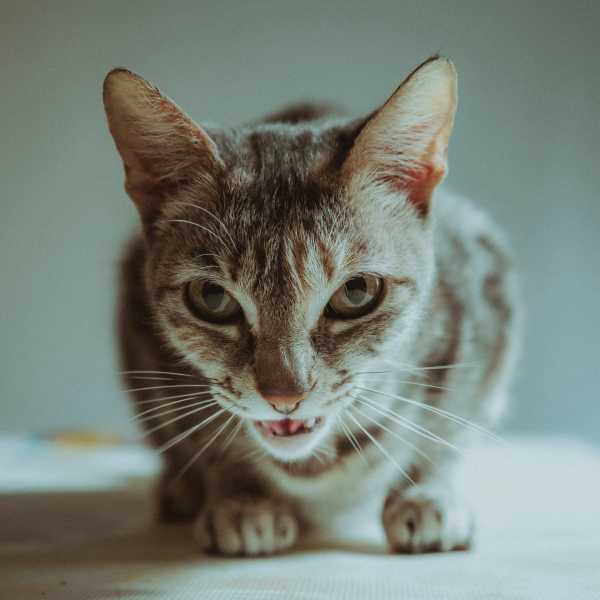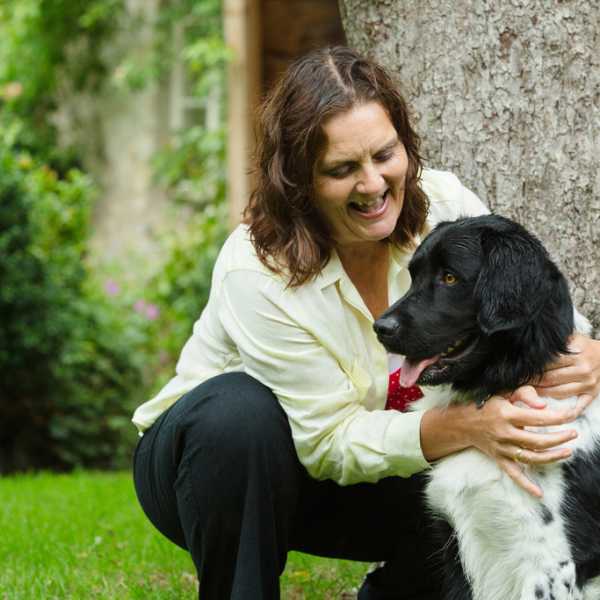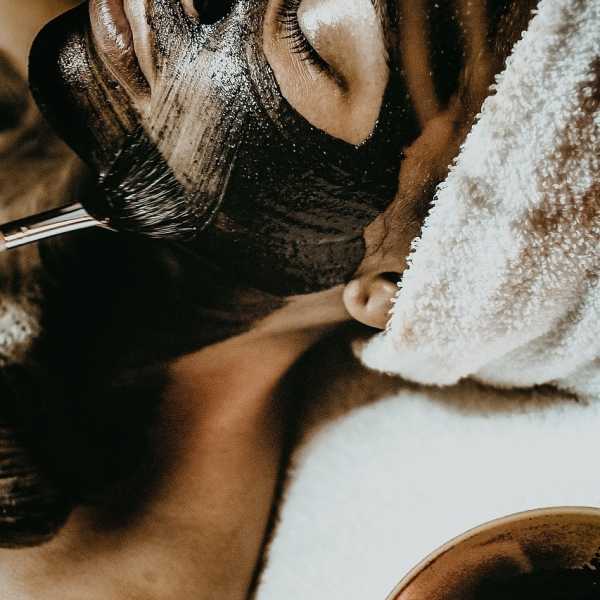
Love Exploring - 30 things you probably didn't know about the UK
Posted on 29 March, 2023

Photo by Gonzalo Facello on Unsplash
Written by & for Love Exploring
How well do you know the UK? It might be small in scale, but this country is rich in history and crammed with quirky places and traditions. Read on to see how much you do (or don’t) know about the UK.
Bengali is the second most spoken language in London
London is a multicultural city. In fact, more than 300 languages are spoken in the capital, more than any other city in the world. According to research by charity City Lit in 2019, Bengali was the most widely spoken second language, closely followed by Polish and Turkish. The study also revealed that, despite the capital’s linguistic diversity, only one in 10 Brits can fluently speak a second language besides English.
You can spot otters in UK cities

One of the UK’s most endearing but elusive species, the Eurasian otter can now be spotted in large urban and industrial centres including Sheffield, Birmingham and London. The protected species was on the brink of extinction in the 1960s, but otters are now flourishing after a reintroduction effort began in the 1980s. Though still rare, the animals can now be seen in almost every county of the UK. Unfortunately, populations of other British mammals like hedgehogs, water voles and the hazel dormouse have rapidly decreased in recent years.
These iconic animals were extinct – then conservationists brought them back
The English invented Champagne

Photo by Tristan Gassert on Unsplash
Both Champagne and English sparkling wine are made using a process known as secondary fermentation (or 'méthode champenoise'), which is commonly thought to have been invented by the French monk Dom Pérignon. But the process was first described by Christopher Merrett (an English physician and founding member of the Royal Society) in 1662, about three decades before Dom Pérignon’s discovery. In a pleasing twist, Champagne house Taittinger has recently established a winery in Kent.
Oxford University is the oldest higher education institution in the English-speaking world

Image by Wolfgang Claussen from Pixabay
Oxford University has been a centre of learning for nine centuries. While there is no official date for its foundation, it’s known that some form of teaching has existed at Oxford since 1096. The oldest colleges are University, Balliol (pictured above) and Merton, established between 1249 and 1264. Remarkably, it was only in 1877 that lecturers at the esteemed academic institute were allowed to get married.
Narnia is in Northern Ireland

Northern Ireland has produced many literary legends, including CS Lewis. To create Narnia, his behind-the-wardrobe world, he was inspired by his childhood holidays to the Mourne Mountains in County Down. It’s easy to see why – the landscape is bewitching. He wrote in his posthumously-published essay On Stories: "I have seen landscapes, notably in the Mourne Mountains and southwards, which under a particular light made me feel that at any moment a giant might raise his head over the next ridge."
England will soon have the longest coastal path in the world
The England Coast Path, a new National Trail around England’s coast, will be the longest coastal path in the world upon completion. Covering much of the English coastline, the path is set to be 2,800 miles (4,506km) long, and passes through some incredible beauty spots. The Wales Coast Path currently holds the title of the only complete coastal path in the world, and stands at 870 miles (1,400km) long.
The British Isles were connected to continental Europe
Where the waves of the North Sea now rage there were once fertile meadows and forests filled with deer, cave lions, sabre-toothed cats, cave hyenas and wolves. The land mass stretched from the east of England to Belgium, the Netherlands and Denmark. It was named Doggerland in the 1990s after the Dogger Bank, a stretch of seabed in the equivalent area today. Various fossils and artefacts have been unearthed by trawlers and archaeologists including harpoons, a 50,000-year-old flint tool, petrified hyena droppings and mammoth molars.
All horses must have a passport (but the King doesn’t)

Photo by Sheri Hooley on Unsplash
Since 2019, all horses, ponies, donkeys, mules and zebras must have a passport in the UK, regardless of whether they travel overseas. According to the British Horse Society, the law was introduced to enable accurate identification. They must be accompanied by their passport at all times. The King, however, does not require a British passport – even though all other royals do – as passports are issued in his name. King Charles III is also the only person in Britain who can drive without a licence.
Loch Ness holds more water than all of England and Wales’ lakes combined

Photo by Ramon Vloon on Unsplash
Deeper than the North Sea and filled with more water than all of England and Wales’ lakes combined, Loch Ness is the most voluminous lake in the UK. It reaches depths of 788 feet (240m) and is around 23 miles (36km) long. It's also brimming with intrigue – the freshwater lake's dark expanse has been steeped in superstition since the first photograph of a 'monster' emerged in 1933.
The Wars of the Roses inspired Game of Thrones
Do you know which two houses fought the Wars of the Roses? It was the House of York and the House of Lancaster, represented by a red rose and white rose respectively. If you didn’t, you might not pass the UK citizenship test with flying colours, as it's one of the questions the test asks. The noble families both laid claim to the English crown in the 15th century, an era of infighting that inspired George RR Martin’s bloodthirsty feuding dynasties in Game of Thrones.
The Tudor Rose symbolised the houses united
Following numerous battles and backstabbings (literally), the houses were united when Henry VII (a Lancastrian) married Elizabeth of York. A new rose became the symbol of England: red with a white centre, symbolising the joining of the two houses and the beginning of the Tudor dynasty. The symbol was used in many buildings of the era, including Hampton Court Palace, and even features on the 20 pence coin. The counties of Yorkshire and Lancashire are still represented by individual red and white roses.
Golf can be traced back to 15th-century Scotland

Image by Wolfgang Claussen from Pixabay
Golf has its origins in Scotland – it was played in the Kingdom of Fife during the 15th century. The early game involved hitting a pebble with a curved stick or club around a natural course of sand dunes, rabbit runs and tracks. King James IV of Scotland was partial to the game, and his daughter Mary, Queen of Scots introduced the pursuit to France while she was studying there. King Charles I later brought the game to England. Scotland is still known for its golfing prowess and world-class courses, the ultimate being St Andrews (pictured above).
The Red Lion is the UK’s favourite pub name
That the UK loves its pubs is not news. But did you know that 'Red Lion' is the most popular pub name? The red lion was the emblem of James I (James VI of Scotland) who, when he inherited the throne of England, decreed that certain public buildings should display the sign to signify their loyalty. The White Hart is another popular moniker. It was the heraldic emblem of Richard II, who ordered all alehouses to be marked with a sign in 1393 for taxation purposes.
Fordwich is the smallest town in the UK
The pretty riverside town of Fordwich, on the Great Stour just outside Canterbury, is officially the UK’s tiniest town, home to just under 400 residents. The town was first recorded in AD 675, and today proudly proclaims its status on welcome signs. As well as beautiful old houses and river trails, it has a church, town hall and two pubs, including the Fordwich Arms which offers a Michelin-starred restaurant and rooms.
Golden hares live on Rathlin Island
Sitting off the north coast of County Antrim in Northern Ireland, Rathlin Island is a wild and beautiful place home to a mere 140 people. It’s got plenty of incredible wildlife, though, from sea birds like puffins to common and grey seals. Look closely and you may spy an altogether more unusual creature – the golden hare. A type of Irish hare, there are a small number of these golden-haired hares on Rathlin Island, which also have striking blue eyes and adorable thumpers.
A Welsh mathematician invented the equal sign
A 16th-century mathematician called Robert Recorde from Tenby in Pembrokeshire invented the mathematical equal sign. His book The Whetstone of Witte shows the first use of the '=' symbol. He chose two parallel horizontal lines to represent the concept because "noe 2 thynges can be moare equalle". It didn’t add up to good fortune, however, as Recorde died in a debtor’s prison in London in 1558. You can learn more about Recorde at the Tenby Museum.
It was illegal not to celebrate Bonfire Night until 1959

Photo by Nathan Lindahl on Unsplash
The UK lights bonfires and sets off fireworks on 5 November to mark the anniversary of the Gunpowder Plot in 1605 – a thwarted revolutionary attempt to blow up King James I and the Houses of Parliament in London. But did you know that it was illegal not to celebrate Bonfire Night in the UK until 1959? There was only one exception to this rule: St Peter's School in York, where the plot's executor Guy Fawkes had been educated. As a mark of respect, they were permitted to abstain from celebrating the hanging, drawing and quartering of their former pupil.
The oldest blue plaque is dedicated to Napoleon III
Look around Britain's streets and you’ll see little blue plaques marking buildings where famous people once lived. The oldest surviving plaque is dedicated to the last French Emperor, Louis-Napoleon Bonaparte, who lived on King Street off St James’s Square in 1848 while in exile in London. A commemorative plaque was installed in 1867. According to English Heritage, which runs the scheme, Louis-Napoleon left his London abode in a hurry after hearing of the overthrow of King Louis Philippe (his rival), leaving his bed unmade and bath full of water.
London’s West End has the world’s longest-running play

Photo by Clem Onojeghuo on Unsplash
Agatha Christie’s mystery The Mousetrap had its world premiere at the Theatre Royal in Nottingham on October 6, 1952. After touring, it opened in London’s Ambassadors Theatre on 25 November of the same year. It moved to the larger St Martin’s Theatre next door in 1974, where it has since been performed over 28,500 times, selling over 10 million tickets.
Wales is king of the castles

Wales officially has more castles per square mile than any other country in the world – a whopping 427 of them! The largest stronghold in Wales is Caerphilly, a 1268-built behemoth that's the second largest castle in the UK, behind only Windsor. Britain's oldest fortress is Chepstow Castle, also in Wales. Chepstow also boasts the oldest castle doors in Europe, dating back to the 1190s.
The Romans gave Britain its name, roads, running water and pies
When the Romans conquered Britain in AD 43, they left a lasting legacy. The name 'Britain' is of Roman origin, they introduced the chilly isle to warm baths and they constructed over 10,000 miles (16,000km) of roads. Brits can also thank the Romans for pies. A meat filling, enclosed in a basic pastry made of flour and oil, can be traced back to ancient Rome. Originally you weren’t meant to eat the pastry – it was more a disposable container that preserved the filling. Sweet fruit pies first appeared in the 16th century, with Elizabeth I allegedly eating the first ever cherry pie.
Anglo-Saxon rulers were mostly vegetarian
Forget great banquets of game and poultry: the food in Anglo-Saxon England was an entirely different beast. Recent Cambridge University studies, published in the journal Anglo-Saxon England, analysed 2,023 skeletons buried between the 5th and 11th centuries, and found that high protein diets were extremely rare before the Vikings settled. They observed that pre-Viking nobles mostly ate breads and vegetable stews, while meat-based feasts were reserved for special occasions. These feasts were enjoyed by peasants too, challenging the idea of a meaty social divide between the posh and the poor.
The King owns many aquatic creatures
In one of the more obscure of England's ancient laws, all cetaceans and sturgeons in UK waters are technically the property of the Crown. This stems from a 1322 statute called the 'Prerogativa Regis'. It reads: "The king shall have wreck of the sea throughout the realm, whales and sturgeons taken in the sea or elsewhere within the realm, except in certain places privileged by the king." Unmarked mute swans in open waters across England and Wales have also been considered the property of the monarch since the 12th century.
Wales has some very long place names
You may well know that Wales boasts the second longest place name in the world (pipped to the post by a hill in New Zealand). But did you know that the little village of Llanfairpwllgwyngyllgogerychwyrndrobwllllantysiliogogogoch on the island of Anglesey means 'St Mary’s Church in the Hollow of the White Hazel near a Rapid Whirlpool and the Church of St Tysilio near the Red Cave'? The lengthy name was apparently coined for the town’s railway station in 1869 as part of a publicity stunt to draw in visitors.
A spoon is the oldest object in the Crown Jewels
Did you know that the original Crown Jewels, created for Edward the Confessor (the last Anglo-Saxon king), were melted down at the end of the English Civil War to make coins to pay the Parliamentarian army that defeated King Charles I? The only item that escaped was a 12th-century coronation spoon. It was purchased by a Mr Kynnersley, Yeoman of Charles I's Wardrobe, who later returned it to Charles II for use at his coronation in 1661. Small pearls were added and the spoon has been used in the anointing of new monarchs ever since.
The royal family always use Welsh gold for their wedding rings
The tradition of using Welsh gold in royal weddings was started by Queen Elizabeth the Queen Mother, then Lady Elizabeth Bowes-Lyon, on her marriage to the Duke of York on 26 April 1923. It’s a tradition that has continued for 95 years, including at the wedding of Prince Harry and Meghan Markle in 2018. The rare gold came from the Clogau St David’s gold mine in Bontddu, near Barmouth in Gwynedd, northwest Wales.
The world’s only penguin with a knighthood lives in Edinburgh
Edinburgh Zoo has many unusual inhabitants, but one has an extra distinction. Waddle forward Sir Nils Olav, the world’s only penguin with a knighthood. The king penguin was given to the zoo by Norwegian Major Nils Egelien in 1972. The adorable penguin soon became a mascot for the Norwegian Guard and quickly moved up the ranks. With 130 guardsmen as witnesses, in 2008 he was awarded a knighthood – performed by King Harald V of Norway himself.
Parliament has some odd traditions
Parliament has many historic quirks. For example, at the state opening of Parliament, the Black Rod is an official sent from the House of Lords to the House of Commons to summon Members of Parliament to hear the King's Speech. Then, the door of the Commons is rudely slammed in the Black Rod's face to represent the Commons' independence. The Black Rod must bang on the door three times with their namesake black rod to gain admittance. It’s then opened, and MPs finally follow the Black Rod to hear the speech.
The Phoenicians may have introduced saffron to Cornwall

Photo by Mohammad Amiri on Unsplash
Anyone who’s been to Cornwall will have seen (and most likely sampled) a saffron bun. But how did this luxurious and exotic spice become a staple of the Cornish larder? Some say we have the Phoenicians to thank. Seafarers from the ancient eastern Mediterranean civilisation were said to have traded the dried and powdered stigmas of the saffron crocus with the Cornish, possibly as early as 400 BC. More concrete evidence of saffron's arrival in the UK comes from the 14th century, when Spanish saffron was traded for tin and copper. Today, the Cornish Saffron Co grows the purple crocuses on the Roseland Peninsula.
English nursery rhymes can be subversive
Thought Baa Baa Black Sheep was just about fluffy sheep? Think again: it's actually about a wool tax imposed by King Edward I in the 13th century. Ring a Ring o' Roses, meanwhile, was long thought to refer to the 1665-1666 Great Plague of London, though this is now thought to be fiction.
To read the original article, please visit: www.loveexploring.com/gallerylist/159399/30-things-you-probably-didnt-know-about-the-uk
Tags:



